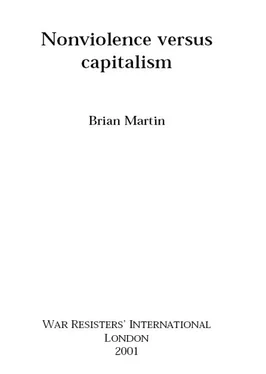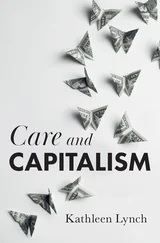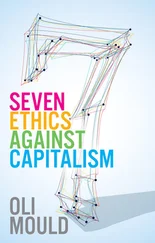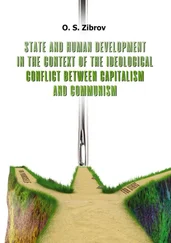If these are some of the strengths of nonviolent action, what are the weaknesses? Of course, nonviolent action may not work, but then no method is guaranteed to work in every circumstance. Therefore it is useful to compare nonviolent action to two alternatives: violence (armed struggle) and official channels (such as operating through bureaucracies, courts and governments).
Nonviolent discipline can be hard to sustain. A small number of participants who become violent or run away can be damaging to an action. Military forces use force to maintain discipline, for example by imposing punishments on those who refuse orders and by court-marshalling deserters. Official channels have their own requirements, such as forms to fill out and payments to make: those who do not follow the rules usually make little progress. Nonviolent discipline relies more on moral sanctions than do the military and bureaucracies.
Mobilising support for nonviolent action can be difficult. Military forces can employ soldiers or use conscription. Government departments hire employees. So far, most nonviolent activists have been volunteers.
Nonviolent action has an image problem. From the point of view of those who favour or are used to armed struggle, nonviolent action seems weak. A standard assumption is that the side with the greater capacity for inflicting violence will necessarily win in a struggle. From the point of view of those who favour official channels, nonviolent action is inappropriate, illegitimate or illegal.
As a pragmatic method for reform, nonviolent action may not lead to lasting change. As noted above, there have been some spectacular nonviolent campaigns against dictatorial regimes, but the aftermath has seen a new system of oppression. On a smaller scale, nonviolent protests may lead to a change in government policy that is quietly reversed once the protesters are gone.
As a systematic alternative, nonviolent action has extremely radical implications. To run a society without systems of violence would mean that governments and corporations could not survive without widespread support. Completely different arrangements might be needed for organising work, community services and defence.
Nonviolent action thus has many strengths but also a number of weaknesses. Several of the strengths are important for challenging capitalism, especially self-consistency, participation and forging lasting change. It is also important for activists to be aware of and try to overcome the weaknesses, especially the reversal of changes made through nonviolent action and the need for a full-scale alternative to capitalism.
It might seem that there is a contradiction in saying that nonviolent action can lead to more lasting change and yet that many of the changes brought about are susceptible to reversal. The resolution is to note that nonviolent action can lead to more lasting change than violence or official channels, especially because it is through a participatory process, but even so reversal of this change is still a great risk. To bring about long-lasting change without using violence is bound to be difficult, and to use violence is to risk causing enormous suffering.
Severe repression [14] . This section is adapted from Brian Martin, “Social defence: arguments and actions,” in Shelley Anderson and Janet Larmore (eds.), Nonviolent Struggle and Social Defence (London: War Resisters’ International, 1991), pp. 81-141, at pp. 99-107.
A common argument against nonviolent action is that it can’t work against severe repression. What about ruthless invaders who just keep killing people at the least hint of resistance? What can be done to stop a programme of total extermination? How can nonviolent action possibly work against repressive regimes such as the dictatorships of Hitler and Stalin?
It is worthwhile exploring various responses to these questions. Nonviolent resistance can be successful against very repressive regimes. As described earlier, the Iranian revolution occurred in the face of a ruthless military and torture apparatus. Against the Nazis, there was effective nonviolent resistance in several countries, including Norway, Denmark and the Netherlands. [15] . Jacques Semelin, Unarmed Against Hitler: Civilian Resistance in Europe 1939-1943 (Westport, CT: Praeger, 1993).
However, nonviolence was not tried, in a big way, against the Nazis. Many Germans were ardent supporters of the Nazis, and many people in other countries were admirers as well. Supporters of military methods tended to be especially favourable to the Nazis.
There was no concerted attempt from outside Germany to undermine the Nazis using nonviolent methods. Stephen King-Hall gives a telling account of how he tried futilely as late as 1939 to drum up British government support for a campaign to undermine the German people’s support for Hitler. [16] . Stephen King-Hall, Total Victory (London: Faber and Faber, 1941), appendix 3.
There has been no further study on this issue, so it must be considered a possibility that concerted nonviolent attack from around the world could have undermined or restrained the Nazi regime.
Throughout the rule of the Nazis, there was a German opposition to Hitler. This internal opposition was not fostered by the Allies, nor was it given sufficient credit by postwar writers. [17] . Hans Rothfels, The German Opposition to Hitler (London: Oswald Wolff, 1961). See also Werner Rings, Life with the Enemy: Collaboration and Resistance in Hitler’s Europe 1939-1945 (London: Weidenfeld and Nicolson, 1982).
To take another example, consider the 1990 invasion of Kuwait by the Iraqi military under Saddam Hussein. Nonviolent resistance by the Kuwaiti people was probably not a possibility, since Kuwait was a grossly unequal and authoritarian society, so it would have been difficult to build a popular base for nonviolent resistance. The time to stop Saddam Hussein was much earlier, in the 1980s. Nonviolent opposition was required then against the governments of Iraq, Kuwait and others in the Gulf region that were repressive and undemocratic.
A principal reason why Saddam Hussein’s Iraq became such a military power and threat was the support given by outside powers. The Iraqi invasion of Iran in 1980 was supported by the governments of the US, Soviet Union and many other countries. Numerous companies sold Saddam Hussein arms and technologies of repression. Governments were silent about his use of chemical weapons against Iranians and against Kurds in Iraq and about his brutal repression of political opponents in Iraq. He was given diplomatic support right up until the invasion of Kuwait.
Since many governments gave Saddam Hussein support during the 1980s, a key role for nonviolent action should have been to expose and oppose the hypocritical foreign policies of Western governments. That is a lesson for the future. There are plenty of repressive regimes in the world today being given full support by Western governments.
Real-life dictatorships are not as all-powerful as might be imagined. Under the brutal military regimes in Argentina and Chile in the 1970s and 1980s, many individuals continued to openly express opposition in the workplace, in public protests and in the media. Student protests shook the harsh regimes in South Korea and Burma. If nonviolent resistance could be prepared for and expanded, then dictatorships would be difficult to sustain.
For example, consider the courageous stand of publisher Jacobo Timerman in Argentina, who maintained his newspaper’s open resistance until he was arrested and tortured. An international campaign led to his release and he wrote about his experiences in a powerful book. His efforts were among those that contributed to the collapse of the generals’ regime in the country. [18] . Jacobo Timerman, Prisoner Without a Name, Cell Without a Number (New York: Vintage, 1982).
Читать дальше

![Brian Jacques - Martin the Warrior [Redwall 6]](/books/128385/brian-jacques-martin-the-warrior-redwall-6-thumb.webp)










